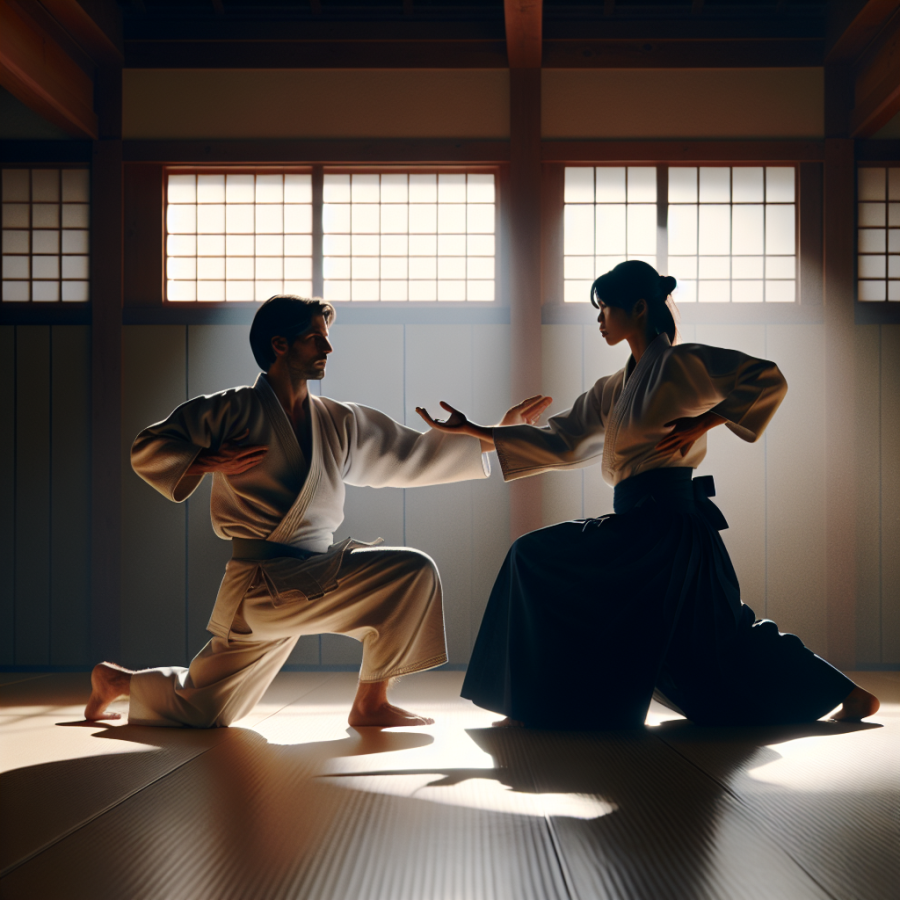The Dynamics of Aikido Training: Building a Harmonious Mind and Body Connection
Aikido is more than just a martial art; it is an embodiment of conflict resolution principles that emphasize the importance of harmonizing with an opponent to prevent harm. This embodiment is achieved through continuous training, which cultivates both the mind and the body, ultimately leading to the development of a peaceful warrior. Harnessing the dynamics of Aikido training can significantly influence one's approach to challenges, both on and off the mat.
At the heart of Aikido training lies the principle of blending with the energy of the attacker instead of confronting it head-on. This approach requires students to foster a unique physical awareness that allows them to understand and redirect force rather than opposing it forcefully. By practicing the art of timing, balance, and coordination, students develop the ability to move with grace and efficiency, mirroring the flowing and circular motions characteristic of Aikido techniques.
The dojo, or training hall, serves as a sanctuary where the Aikido practitioner refines their movements and techniques. Here, students learn to apply various holds, joint locks, and throws that are a staple of this martial art form. Yet, these techniques are not designed to be aggressive; instead, they are expressions of the martial artist's deep understanding of biomechanics and leverage, which permits control of the situation with minimum effort. Achieving proficiency in these techniques calls for rigorous practice and a commitment to mastering the intricacies of bodily movement.
Beyond physical fitness and technique, one of the most transformative aspects of Aikido training is the cultivation of mental presence and clarity. Aikido practitioners strive to maintain a state of relaxed alertness, where the mind is free from distractions and focused on the present moment. This mental state is crucial for effectively responding to an opponent’s actions and maintaining control of the self. Through meditation and breathing exercises, Aikido students learn to center themselves, reducing stress and anxiety to achieve a state of inner calmness that transcends the dojo and empowers their daily lives.
The Aikido concept of "Ki" represents the life force or energy that flows through all things, and training aims to unify the practitioner's Ki with that of the universe. This is crucial for executing techniques with optimal power and efficiency. By aligning one's Ki, Aikido training goes beyond mere physical preparedness; it fosters a sense of connection with others and the environment, giving practitioners the ability to lead rather than dominate, to persuade rather than compel.
Read also:
Top Athletes Earning Crypto: The Million-Dollar Salaries
Exploring Aikido: The Philosophy and Techniques of Peaceful Self-Defense
Aikido, often translated as "the way of harmony with the spirit," is a Japanese martial art that distinguishes itself from other fighting styles with its emphasis on motion and the dynamics of movement. Founded by Morihei Ueshiba in the early 20th century, Aikido evolved from the synthesis of his martial studies, philosophy, and religious beliefs. Its core goal is not to defeat the enemy, but rather to achieve a peaceful resolution.
At the heart of Aikido lies the concept of blending with an aggressor's movements and using their energy against them, without inflicting unnecessary harm. This is accomplished through a variety of throws, joint locks, and pins. The motions are characterized by fluid, circular movements that redirect the opponent's force. Unlike many other martial arts, Aikido does not focus on punching or kicking adversaries; instead, it concentrates on using an assailant's energy to control them.
One of the foundational techniques in Aikido is called "irimi," which means entering. It involves moving into a position that is off the line of attack and simultaneously creates an opportunity to apply a technique. Another critical principle is "tenkan," or turning, which involves re-directing the opponent's force by pivoting around them. These movements highlight Aikido's focus on position and leverage rather than on brute strength.
Another aspect of Aikido that makes it unique is its philosophical underpinning. Ueshiba was influenced by Omoto-kyo, a Shinto-derived religion, which emphasizes the importance of achieving peace and harmony in life. Consequently, Aikido is often referred to as a "martial art of peace," reflecting its originator’s belief that one should defend themselves without causing injury to their attacker. The art promotes discipline, ethical behavior, and the notion that true victory is not winning the fight, but averting the conflict.
In practice, Aikido trainees, or "aikidoka," work with a partner to simulate attacks and defenses. Training usually begins with students understanding how to fall safely, known as "ukemi," which is vital as it teaches how to receive techniques without injury. As students advance, they learn more dynamic and complex techniques, always working to harmonize their movements with those of their training partners.
The beauty of Aikido also lies in its accessibility. It is a martial art that individuals of all ages and physical capabilities can practice.




